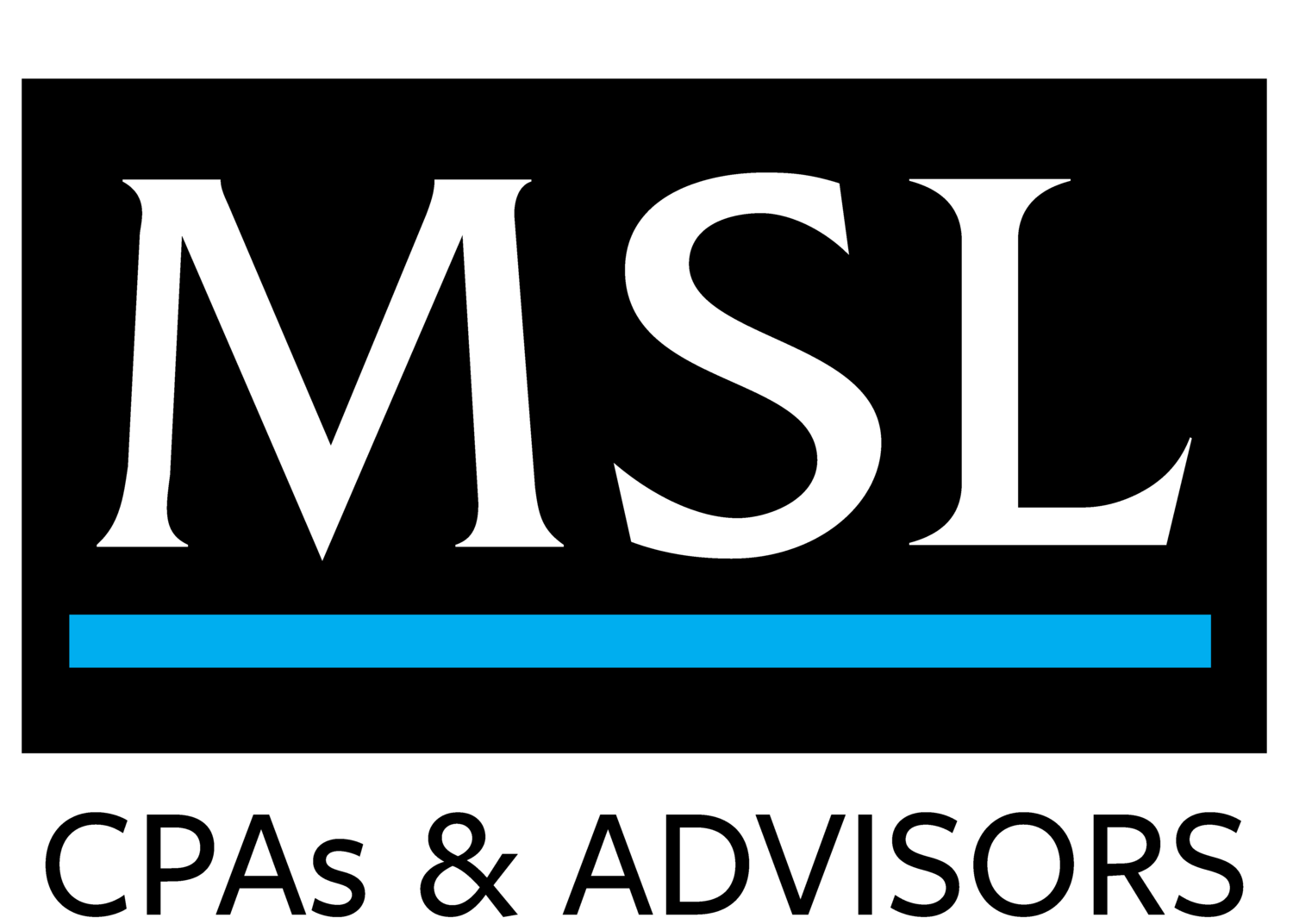Accounting Standards Update 2018-11—Leases (Topic 842): Targeted Improvements
/The following ASUs (5) were issued since July 2018 (last one was ASU 2018-10).
ASU 2018-11 Leases – Targeted Improvements
Issued: July 2018
Summary:
The FASB has been assisting stakeholders with implementation questions and issues as organizations prepare to adopt the new leases standard (Topic 842). Many stakeholders have inquired about two requirements in the new standard (1) Transition – Comparative Reporting at adoption) and (2) Lessors Only – Separating Components of a Contract.
Transition Item - The Board decided to provide another transition method in addition to the existing transition method by allowing entities to initially apply the new leases standard at the adoption date (such as January 1, 2019, for calendar year-end public business entities) and recognize a cumulative-effect adjustment to the opening balance of retained earnings in the period of adoption consistent with preparers’ requests.
Separating Components (Lessors) – In new lease standard, an entity must separate lease components from nonlease components (for example, maintenance services or other activities that transfer a good or service to the customer other than the right to use the underlying asset) in a contract. The amendments in this Update provide lessors with a practical expedient, by class of underlying asset, to not separate nonlease components from the associated lease component and, instead, to account for those components as a single component if the nonlease components otherwise would be accounted for under the new revenue guidance (Topic 606) and certain criteria are met (refer to the ASU).
Effective Date:
The amendments in this Update will essentially be effective when the lease standard (Topic 842 / ASU 2016-02) become effective (Public 2019 / Private 2020).
ASU 2018-12 Financial Services – Insurance (Topic 944) – Targeted Improvements to the Accounting for Long-Duration Contracts
Issued: August 2018
Summary:
The Board undertook this project with the objective of making targeted improvements to the existing recognition, measurement, presentation, and disclosure requirements for long-duration contracts issued by an insurance entity. The amendments in this Update: 1. Improve the timeliness of recognizing changes in the liability for future policy benefits and modify the rate used to discount future cash flows 2. Simplify and improve the accounting for certain market-based options or guarantees associated with deposit (or account balance) contracts 3. Simplify the amortization of deferred acquisition costs 4. Improve the effectiveness of the required disclosures.
More detailed information on the amendments can be found within the ASU.
Effective Date:
Public – Effective for FYs beginning after December 15, 2020.
All Other Entities - Effective for FYs beginning after December 15, 2021.
Early adoption is permitted.
ASU 2018-13 FV Measurement (Topic 820) Disclosure Framework—Changes to the Disclosure Requirements for Fair Value Measurement
Issued: August 2018
Summary:
The amendments in this Update are part of the FASB’s disclosure framework project and modify the disclosure requirements on fair value measurements in Topic 820, Fair Value Measurement, based on the concepts in the Concepts Statement (issued by the FASB in August 2018), including the consideration of costs and benefits.
Removals: The following disclosure requirements were removed from Topic 820:
1. The amount of and reasons for transfers between Level 1 and Level 2 of the fair value hierarchy
2. The policy for timing of transfers between levels
3. The valuation processes for Level 3 fair value measurements
4. For nonpublic entities, the changes in unrealized gains and losses for the period included in earnings for recurring Level 3 fair value measurements held at the end of the reporting period.
Modifications: The following disclosure requirements were modified in Topic 820:
1. In lieu of a roll forward for Level 3 fair value measurements, a nonpublic entity is required to disclose transfers into and out of Level 3 of the fair value hierarchy and purchases and issues of Level 3 assets and liabilities.
2. For investments in certain entities that calculate net asset value, an entity is required to disclose the timing of liquidation of an investee’s assets and the date when restrictions from redemption might lapse only if the investee has communicated the timing to the entity or announced the timing publicly.
3. The amendments clarify that the measurement uncertainty disclosure is to communicate information about the uncertainty in measurement as of the reporting date.
Additions: The following disclosure requirements were added to Topic 820; however, the disclosures are not required for nonpublic entities:
1. The changes in unrealized gains and losses for the period included in other comprehensive income for recurring Level 3 fair value measurements held at the end of the reporting period
2. The range and weighted average of significant unobservable inputs used to develop Level 3 fair value measurements. For certain unobservable inputs, an entity may disclose other quantitative information (such as the median or arithmetic average) in lieu of the weighted average if the entity determines that other quantitative information would be a more reasonable and rational method to reflect the distribution of unobservable inputs used to develop Level 3 fair value measurements.
Effective Date:
ALL Entities – FYs beginning after December 15, 2019.
Early adoption is permitted.
ASU 2018-14 COMPENSATION—RETIREMENT BENEFITS—DEFINED BENEFIT PLANS—GENERAL (SUBTOPIC 715-20): DISCLOSURE FRAMEWORK—CHANGES TO THE DISCLOSURE REQUIREMENTS FOR DEFINED BENEFIT PLANS
Issued: August 2018
Summary:
The Board is issuing the amendments in this Update as part of the disclosure framework project. The amendments in this Update apply to all employers that sponsor defined benefit pension or other postretirement plans. The amendments in this Update remove disclosures that no longer are considered cost beneficial, clarify the specific requirements of disclosures, and add disclosure requirements identified as relevant. Although narrow in scope, the amendments are considered an important part of the Board’s efforts to improve the effectiveness of disclosures in the notes to financial statements by applying concepts in the Concepts Statement. More detailed information on the amendments can be found within the ASU.
Effective Date:
Public – FYs beginning after December 15, 2020.
All Others - FYs beginning after December 15, 2021.
ASU 2018-15 INTANGIBLES—GOODWILL AND OTHER—INTERNAL-USE SOFTWARE (SUBTOPIC 350-40): CUSTOMER’S ACCOUNTING FOR IMPLEMENTATION COSTS INCURRED IN A CLOUD COMPUTING ARRANGEMENT THAT IS A SERVICE CONTRACT (A CONSENSUS OF THE FASB EMERGING ISSUES TASK FORCE)
Issued: August 2018
Summary:
During the comment period and after the issuance of ASU 2015-05, several stakeholders requested that the Board provide additional guidance on the accounting for costs of implementation activities performed in a cloud computing arrangement that is a service contract. Because the guidance in the FASB ASC is not explicit in that area, the Board decided to issue this Update to address the resulting diversity in practice. The amendments in this Update apply to entities that are a customer in a hosting arrangement, as defined in the Master Glossary and as further amended by this Update, that is a service contract.
The amendments in this Update align the requirements for capitalizing implementation costs incurred in a hosting arrangement that is a service contract with the requirements for capitalizing implementation costs incurred to develop or obtain internal-use software (and hosting arrangements that include an internal use software license). Accordingly, the amendments in this Update require an entity (customer) in a hosting arrangement that is a service contract to follow the guidance in Subtopic 350-40 to determine which implementation costs to capitalize as an asset related to the service contract and which costs to expense.
Effective Date:
Public – FYs beginning after December 15, 2019.
All Others - FYs beginning after December 15, 2020.
Reminder of Effective Dates on Previously Issued ASUs
Revenue Recognition Standard (ASU 2014-09/2015-04):
Public – FYs beginning 1/1/18 and on / NFPs that have issued, or are conduit bond obligors for, securities traded, listed, or quoted on an exchange or OTC market will be considered public for implementation purposes
Private – FYs beginning 1/1/19 and on.
Financial Instruments (ASU 2016-01): Change in FV of equity securities will be recorded in net income rather than OCI.
Public – FYs beginning 1/1/18 an on
Private – FYs beginning 1/1/19 and on
NFP Reporting (ASU 2016-14): Private – FYs beginning 1/1/18 and on.
SofCF Restricted Cash (ASU 2016-18): Include in cash and CE on SofCF and reconcile between balance sheet presentation, if necessary.
Public – FYs beginning 1/1/18 and on.
Private – FYs beginning 1/1/19.
Leases (ASU 2016-02): Right of use asset and lease liability to be recorded on balance sheet. Public – FYs beginning 1/1/19 and on / NFP consider to be conduit bond obligors will be on schedule with public entities
Private – FYs beginning 1/1/20 and on.






